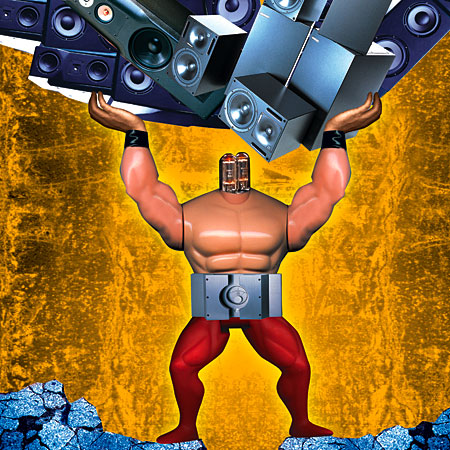Thank you!The hand-waving explanation is that phase determines how voltage and current "peaks" are related. If the phase angle is 0 degrees, voltage and current are exactly in phase, and the power factor is 1. Think of a sine wave with both voltage and current in phase so the curves overlie. Power peaks where the sine waves peak, voltage and current, then falls off since they both "fall" together. The amplifier's power demand is also 1 (relatively).
As the phase angle increases, voltage and current peak at different times, sort of "spreading" the power (the product of voltage and current) over more of the cycle, and apparent power increases. At 45 degrees, current and voltage peaks are a quarter-cycle apart, and you get a series of peaks one after another (alternating current and voltage peaks). The power factor drops to sqrt(2)/2 = 0.7071, meaning real and reactive power are different due to the phase difference, but the amplifier actually delivers twice the average power (power demanded is 2). Instead of two peaks over each cycle (one positive, one negative) now you get four. As the angle goes above 45 degrees the difference in current and voltage peaks lessens again and the amplifier's power drops back towards 1.
HTH - Don
Edit: This is not technically rigorous, take "hand-waving" literally, but helps provide a picture that might help understand why phase matters.
Yes I understand the phase/frequency/level relationship, what I was missing was how this then interacts with V and W... (A) - and how the demands are then spread over time, and not limited to the specific momentary peak.

